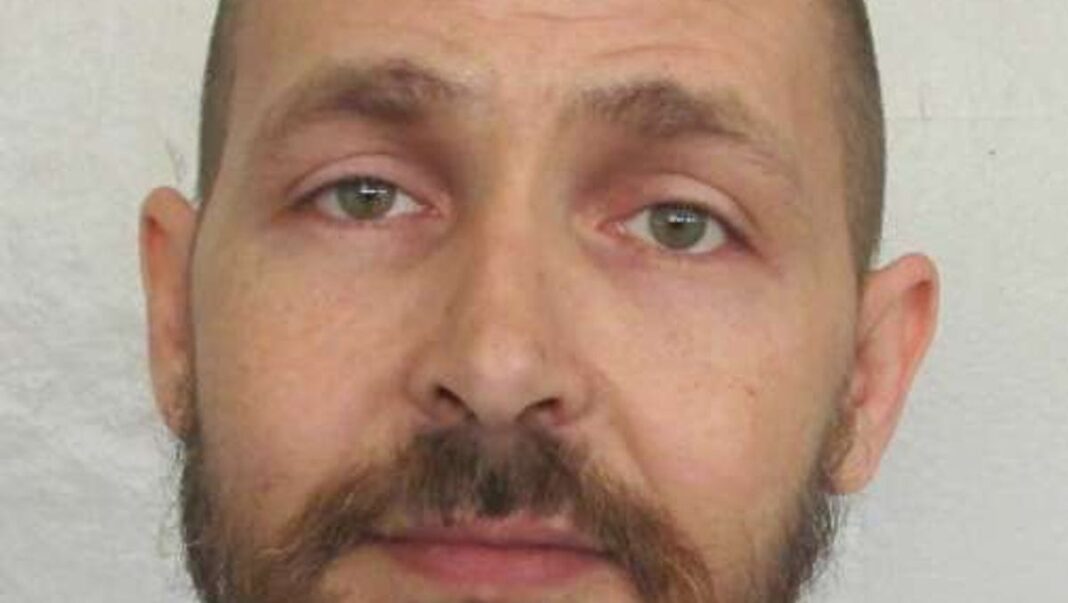Alabama preparing to execute Cary Dale Grayson using nitrogen gas in hitchhiker’s murder case
Carey Dale Grayson is scheduled to be executed by nitrogen hypoxia after being found guilty of murdering 37-year-old hitchhiker Vickie Deblieux in 1994. Supporters argue it’s a painless method, while opponents label it as torture.
A death row inmate in Alabama is expected to become the third person in the U.S. to be executed using nitrogen gas this Thursday for his involvement in the violent 1994 murder of a hitchhiker.
Carey Dale Grayson, now 49 years old, was part of a group of four teenagers found guilty of capital murder involving the torture, beating, and dismemberment of Vickie Lynn Deblieux on February 21, 1994. Deblieux, who was 37 at the time, was hitchhiking from Tennessee to visit her mother in Louisiana when she was picked up by the four teens along a highway near Trussville, shortly before they killed her, according to court documents.
If Grayson’s execution occurs as scheduled on Thursday, he will be the 22nd inmate executed nationwide this year. This also marks Alabama’s sixth execution for the year and the third in the last two months, as reported by the Montgomery Advertiser, part of the YSL News Network.
As his execution date nears, YSL News is revising the details surrounding the crime, Grayson’s background, and how he ended up on this tragic path.
Details regarding Carey Dale Grayson’s conviction
On February 21, 1994, Deblieux was dropped off by a friend in Chattanooga, where she began to hitch a ride southwest.
At one point, Grayson, then 19, along with three others, picked her up on an interstate in Jefferson County, Alabama, approximately 15 miles northeast of Birmingham.
The group stopped in a wooded area on Bald Mountain, claiming they were looking for another vehicle. Instead, they assaulted Deblieux by beating, stomping, and kicking her. Testimonies indicated that Grayson and another teen stood on her throat, ultimately leading to her death.
Her remains were discarded off a cliff, and later the group returned to mutilate her body, inflicting over 180 cuts, removing part of a lung, and severing her fingers, according to court records.
The teens were identified as suspects after one of them showed a friend one of Deblieux’s severed fingers.
Alongside Grayson, the jury also convicted Kenny Loggins, Trace Duncan, and Louis Mangione of capital murder.
However, the death sentences for Duncan, Loggins, and Mangione were overturned, and they received life imprisonment without parole after the U.S. Supreme Court ruled in 2005 that individuals under 18 at the time of the crime could not be executed.
Understanding the nitrogen gas execution method
Nitrogen hypoxia is a contentious execution method, with its first use in the U.S. occurring when Alabama executed Kenneth Eugene Smith this January. Smith’s execution drew widespread criticism and attention, including a protest from the Vatican.
During Smith’s execution, he appeared to convulse on the gurney for several minutes, contrary to prior statements from officials that he would lose consciousness “within seconds” and die shortly after the gas began to flow into his full-face mask.
Alabama Department of Corrections Commissioner John Q. Hamm described Smith’s execution as “textbook” in a news conference shortly after it occurred, affirming that the prison system was ready for additional nitrogen hypoxia executions.
Currently, there are about 160 inmates on death row in Alabama, who can choose their method of execution among lethal injection, nitrogen hypoxia, and electrocution. Grayson is one of approximately 30 inmates who opted for nitrogen hypoxia before its implementation in Alabama.
This method involves the condemned person breathing pure nitrogen through a mask, which replaces oxygen in their body. Supporters claim it offers a quick and painless death, while critics argue it is untested and potentially torturous.
On September 26, Alan Eugene Miller became the second inmate executed in Alabama using nitrogen hypoxia.
Grayson’s legal appeals nearly exhausted
Over the years, Grayson has submitted various appeals but has been unsuccessful. His last chance for reprieve lies with the U.S. Supreme Court and Alabama Governor Kay Ivey, who, when asked about the timing of Grayson’s execution shortly before Thanksgiving, remarked: “Did Carey Grayson give any thought to the fact that he deprived Vicki Deblieux and her family of 30 Thanksgivings?”
The Alabama Supreme Court approved Grayson’s execution on August 15. Shortly thereafter, his attorneys requested a federal judge to stop the state from carrying out the nitrogen protocol.
The lawyers cited Smith’s execution as evidence that the method could be seen as cruel and unusual punishment, as it didn’t guarantee a humane death for their client.
Further Details on Carey Dale Grayson
Grayson suffers from bipolar disorder, and his mother passed away when he was just three years old due to struggles with mental health, as outlined in court documents.
A forensic psychologist indicated that Grayson was “in a manic state” at the time of the murder, but affirmed that he “was aware of right and wrong and understood the nature and seriousness of his actions,” according to court records.
In a police interview, Grayson labeled the younger individuals involved in the incident as the ones who committed the most atrocious acts. When asked about the motive behind the killing of Deblieux, he reportedly said he had no idea and that “it wasn’t his issue.”

